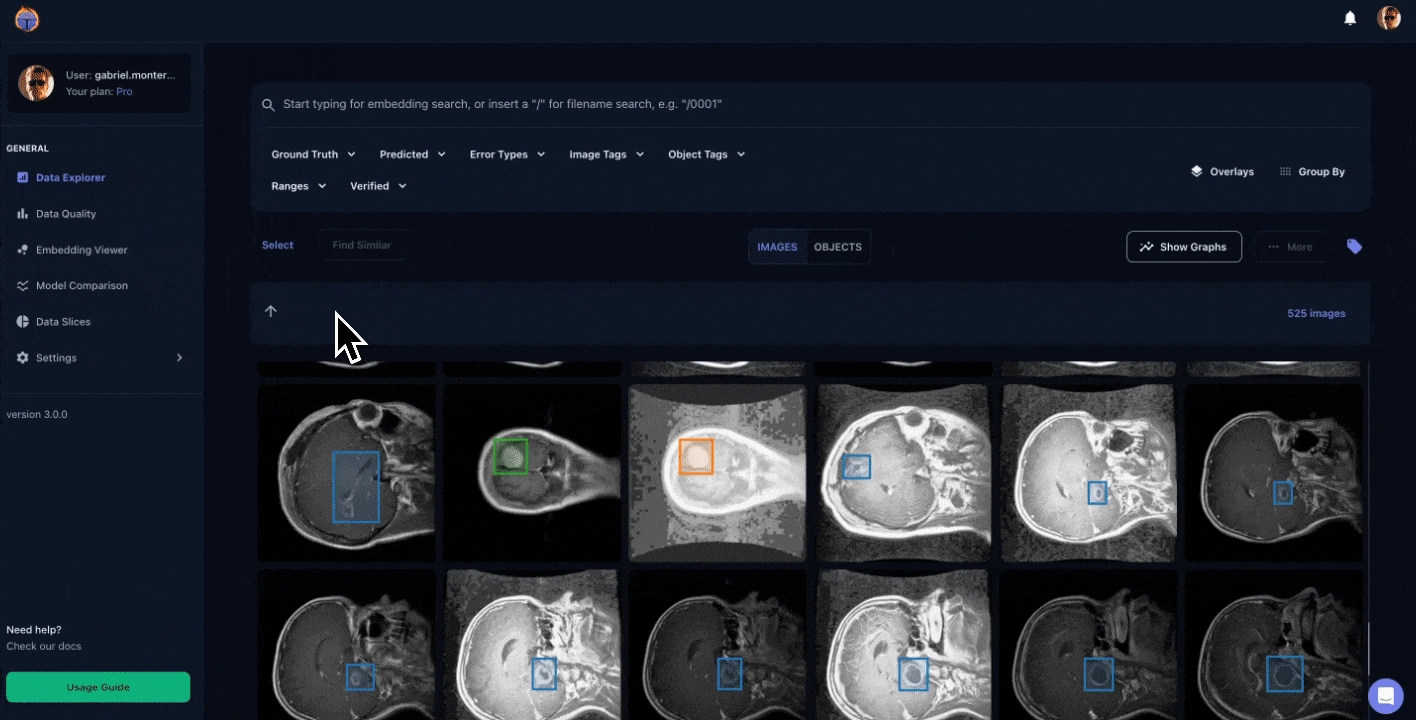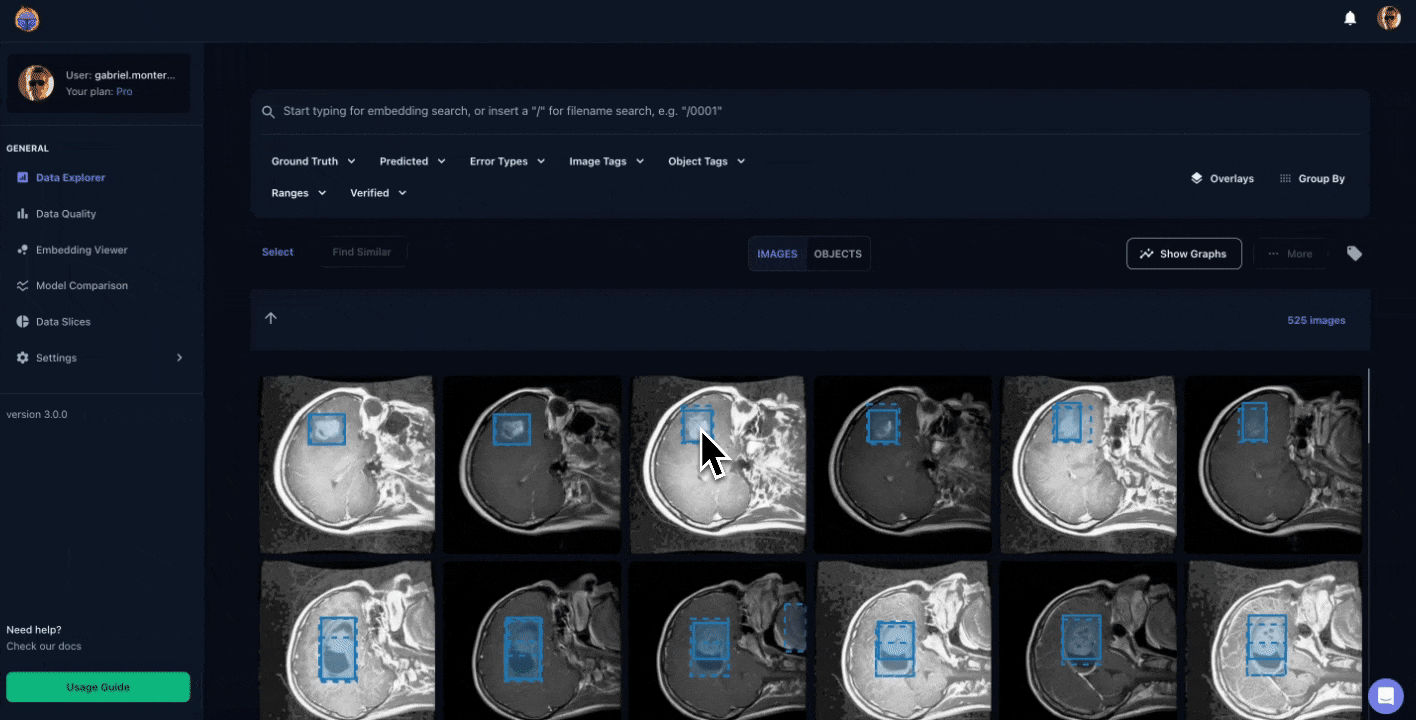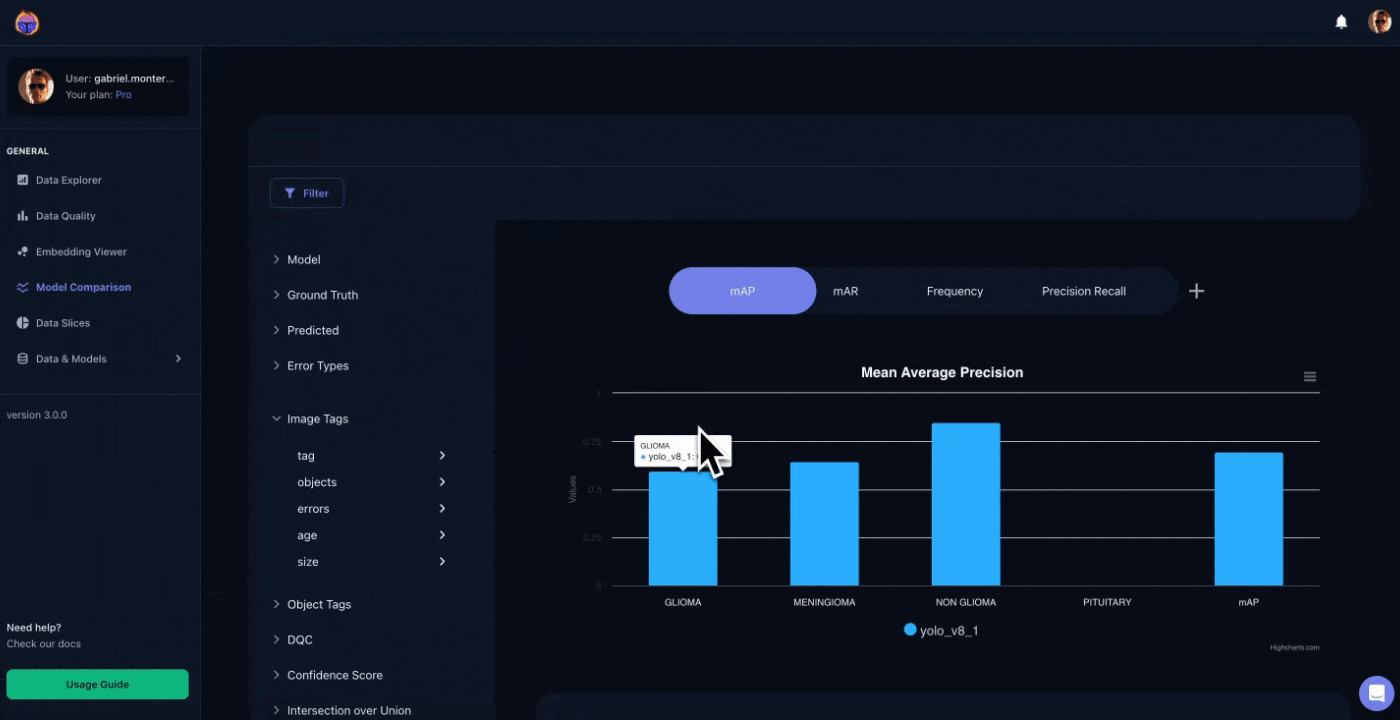Tagging
In Tenyks, tags 🏷️ are labels assigned to categorize and identify related items, such as images and objects.
ObjectsWe define an object as a labelled instance of a specific class. An image can contain one or more objects. Each object is defined by a bounding box (object detection) or by a mask (segmentation).
The goal of tags is that you can easily organize, search, retrieve and evaluate items that have been tagged with the same label or keyword.
To illustrate this feature, we use a medical domain dataset. If you're interested in analyzing this dataset, 👉 try it here on Sandbox!
1. How to tag images
To tag images follow the next steps (see Figure 1):
- Click on "Select", located on the top left side of the Data Explorer
- Two options will show up: Image or Object. Choose "Image"
- Click on the images you want to tag (you will see a square 🟦 around the borders of a selected image)
- On the top right side of the Data Explorer, click on "...More"
- Select ":label: Tag"
- Provide a
nameand avaluefor your tag, following this formattag_name:tag_value. Be aware that a semicolon ":" is required between "tag_name" and "tag_value".- A tag named
annotation_errorscan have values such asmislabelled, etc.
- A tag named
- Click on Create

Figure 1. Tag images by providing a Tag Name and a Tag Value
2. How to tag objects
To tag objects (Figure 2), follow the same steps highlighted in "How to tag images" except that in step 2, instead of Image, select Object.

Figure 2. After selecting objects, you can tag objects by providing a Tag Name and a Tag Value
3. How to remove tag names or tag values
To delete tags (Figure 3), follow the next steps:
- On the horizontal menu, click on Image Tags or Image Objects
- A list containing all the "tag names" will be displayed
- Hover over one of the "tag names" to reveal the values associated with this tag
- Remove a "tag value" or an entire "tag name" by clicking on the cross mark button

Figure 3. Remove tags by clicking on the cross mark sign
4. What you can do with tags
Once you have tagged some images or objects, here are some ways you can use them in your workflows:
4.1 Filter by tag
The most basic functionality for tagged images or objects is to use them to filter your dataset as shown in Figure 4.
- Scenario: A model that predicts tumours of different kinds might be failing to detect a particular class.
- Tags: Not all the failing predictions are likely to reflect the same story, hence you might be interested in creating tags that break down your undetected objects as follow:
- age: pediatric, adult, geriatric
- stage_of_disease: stage_I, stage_II, metastatic
- previous_treatments: chemotherapy, surgery
Using tags you can provide structure to your data filtering ⭐.

Figure 4. Create a categorical tag for Age, then add tag values such as Pediatric or Geriatric
4.2 Evaluate model performance on a set of tagged images
Tagged images or objects can be used to group data points that we are interested in evaluating model performance on, see Figure 5.
- Scenario: You suspect that your model is failing to detect some particular edge cases. How can you evaluate performance on these outliers in minutes rather than in days?
- Tags: Let's assume the edge cases are related to the size of the medical condition.
- First, you can create some tags describing this scenario. For instance, tag name:
size, values:small,medium. - Second, you can evaluate model performance on these two groups of edge cases by simply selecting them on the left side of the Model Comparison feature.
- First, you can create some tags describing this scenario. For instance, tag name:
The time to perform this operation takes minutes! Tenyks really 10x your work as ML engineer! 🚀

Figure 5. Evaluate model performance on the samples with the tag Size for the value Medium
4.3 Use tags to filter by colour on the Embedding Viewer
Filter the embedding space, in the Embedding Viewer, based of your dataset by using tags as reflected in Figure 6.

Figure 6. Filter by tags on the Embedding Viewer
These are only some of the different ways you can use tags on the Tenyks platform.
Updated 11 months ago
